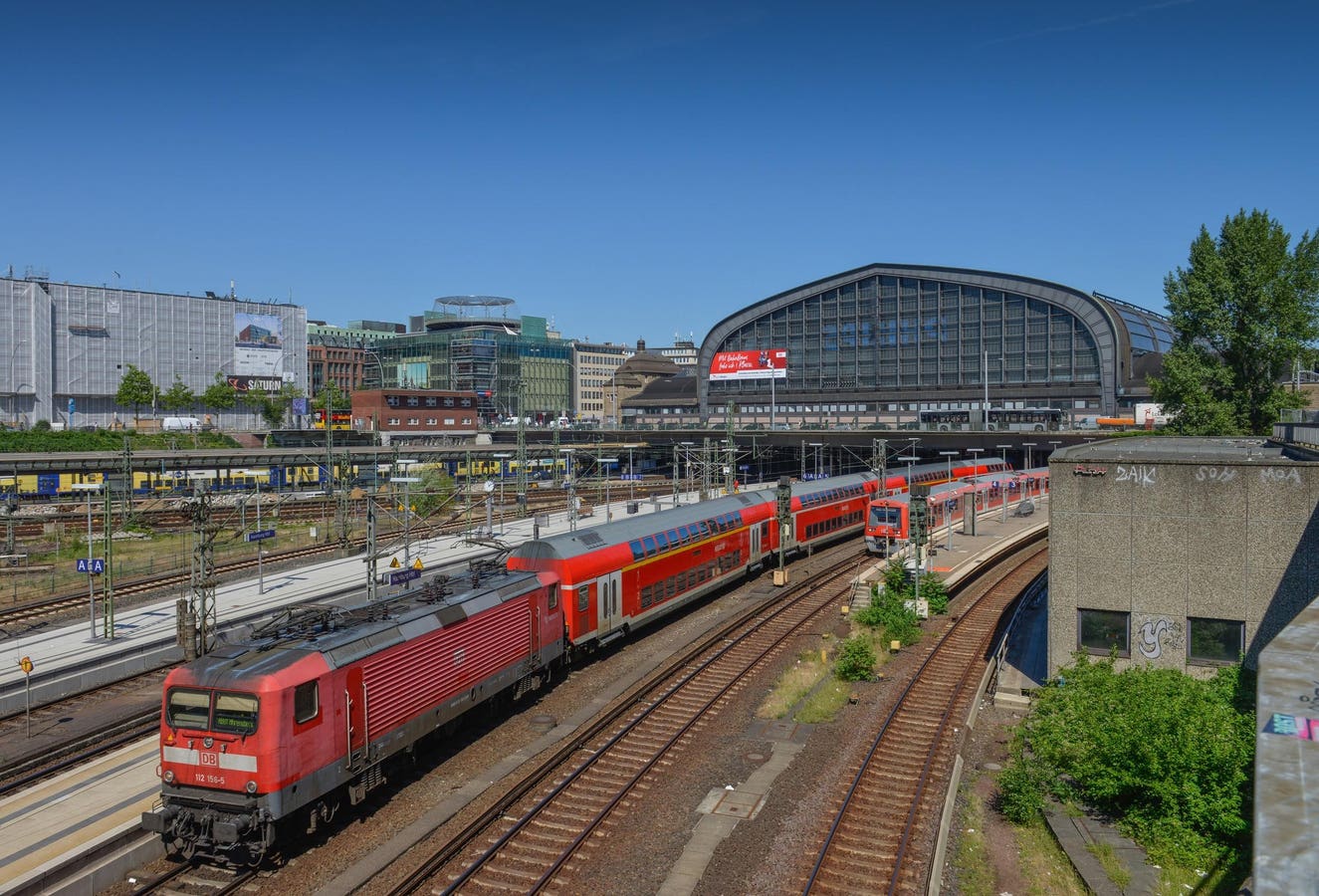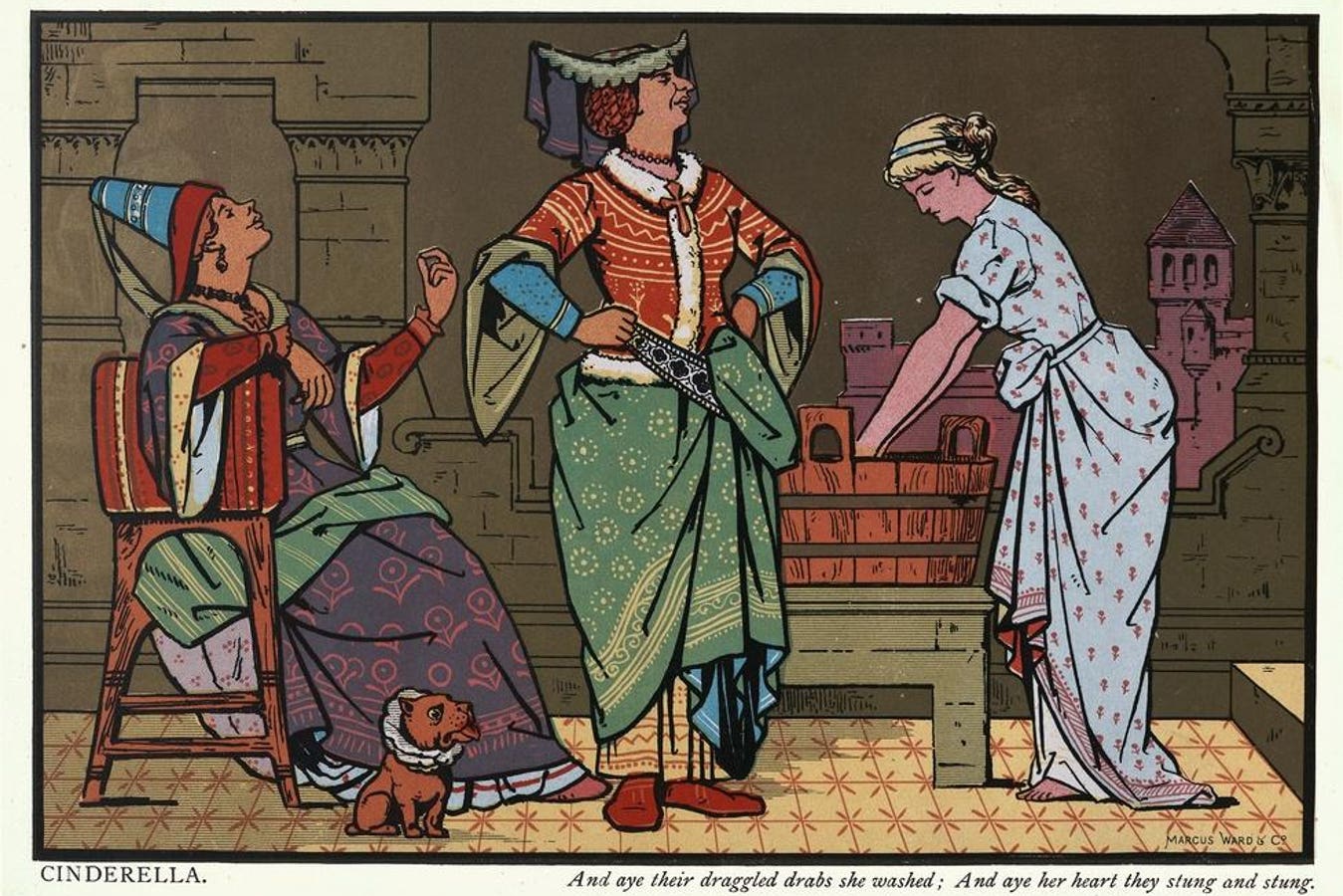Central railway station, Hamburg, Germany. (Photo by: Bildagentur-online/Universal Images Group via … More
The bicentenary celebrations of the birth of modern rail travel—commemorating the epoch-defining opening of the Stockton and Darlington Railway (S&DR) in 1825—was celebrated today at the UITP Summit in Hamburg, Germany, an exhibition organized by the International Association of Public Transport, or Union Internationale des Transports Publics (UITP).
UITP general secretary Mohamed Mezghani told expo delegates that 2025 was a “special year” because of the 200th anniversary. “UITP was born in 1885 as a rail association,” he added, before handing the floor to Simon Coulthard, Head of Light Rail Knowledge and Development at the U.K.’s Network Rail, one of the lead organizations involved with the S&DR200 Festival, a nine-month celebration of rail heritage, culture, and innovation.
“It’s great to be celebrating 200 years of rail here at the UITP Summit,” said Coulthard, “and it’s great to come here to Hamburg from Great Britain, where it all began.”
He added: “The opening of the Stockton and Darlington Railway was a special event in British history, and it’s wonderful to celebrate the legacy of rail that Britain gave to the world.”
Coultard said he would be part of an expert delegation from UITP which will visit Stockton and Darlington in October as part of the S&DR200 Festival.
Raised trackbed of the former railway up the Brusselton Incline on the route of the Stockton & … More
Bicentenary events are currently being staged across the North East of England, including at the expansive Hopetown museum in Darlington which opened last year and incorporates several period buildings such as the 1833 Goods Shed which is now a museum shop and cafe.
The adjacent North Road Station Museum is housed within a still-in-use 1842 Victorian railway station, highlighting Darlington’s legacy of rail engineering. Also at Hopetown Museum is Wagon Woods, a pay-per-child railway-themed adventure play park.
The 21-year-old Locomotion rail museum is also hosting events, including in the New Hall which expands what was already a gargantuan display of historic rail vehicles into the largest and most awe-inspiring such collection in Europe.
Since soul-crushing job losses in the 1960s through to the 1980s, rural County Durham has been one of the most deprived parts of the country. It’s likely cold comfort to those who lost their jobs, but the area is now evolving into a tourism hotspot, with Locomotion alone predicted to attract 250,000 visitors this year.
Watercolour by John Dobbin showing crowds gathered at the opening of the Stockton & Darlington … More
Locomotion
The first steam engine on the S&DR—known as Locomotion No. 1 for 170 years or so—pulled 27 waggons along this first “Permanent Way” on its opening day on 27 September 1825. This linear event was said to have been witnessed by 40,000 or so spectators entertained by a band in the final waggon “playing cheering and appropriate airs.”
The pivotal early locomotive—a travelling steam engine rather than one fixed to the ground—puffed through the Stockton and Darlington Railway’s Georgian landscape. The 26-mile line was mainly used to transport coal to market, but it also carried fare-paying folk and was an important stepping stone in the development of passenger railways, pre-dating the better-known Liverpool to Machester railway of 1830, which is world famous for the Rocket locomotive and was designed from the get-go to be a city-to-city line. (George Stephenson was involved with both railways, and his Newcastle locomotive factory also supplied the first steam engines that worked them.)
Simon Coulthard, Head of Light Rail Knowledge and Development at the U.K.’s Network Rail.
Locomotion Museum houses 47 engines and carriages from the early Stockton and Darlington Railway. Why, in 2004, did London’s Science Museum open such an impressive—and free entry—attraction in a small, tucked-away town some 62 miles from the National Rail Museum in York? Because Shildon was the world’s first “railway town,” created from scratch to house a wagon works operational from 1833 through to 1984 when the plant still employed more than 2,500 people.
The “original” 1825 Locomotion, housed in Locomotion Museum. Many parts were changed during the … More
While pivotal in the history of transport, Coulthard acknowledges that the Stockton and Darlington Railway was not the world’s first railway. “The development of rail technology goes back much further than 200 years in terms of development—the North East of England has a proud history of rail transport before steam locomotives.”
The Stockton and Darlington Railway has been billed as the world’s first passenger-carrying rail line since 1875 thanks to the forgotten Victorian figure James Stephen Jeans. Jeans wasn’t a rail financier, a locomotive engineer, or a wayleave-granting landowner; he was a jobbing journalist. It was 29-year-old Jeans, an eager young wordsmith for hire, who was most responsible for shaping the story of the opening of the Stockton and Darlington Railway as the “greatest idea of modern times.”
In April 1875, Jeans was commissioned by the directors of the North Eastern Railway, owners of the Stockton and Darlington Railway, to write a book celebrating the line’s jubilee in September of the same year. His swiftly-written 315-page history of the first 50 years of the railway—a giveway book created for cash and based on a biased brief from a company with an aggrandising agenda—propagated several myths about the Stockton and Darlington Railway. Myths that are still current.
Historic England claims the Stockton and Darlington line was the “birthplace of the modern railway system,” used “innovative technology to carry both passengers and freight” and “began the railway age which was to change the world.”
New archival research by an eminent North East historian has revealed a far more complex picture, showcasing that railways have a far longer history than most people realise. Les Turnbull, a former university lecturer, has written that, contrary to common claims, the Stockton and Darlington Railway didn’t introduce any ground-breaking technologies—malleable iron rails, cuttings, embankments, large railway bridges, signals, and locomotives existed long before 1825—nor was it the first public railway, and the line wasn’t even the first railway to take paying passengers.
The Surrey Iron Railway of 1801, the Swansea and Mumbles line of 1804, and the Kilmarnock and Troon line of 1812 predated the Stockton and Darlington line as public railways, with the last two lines carrying passengers as well as freight. The Middleton Railway to Leeds was established in 1758 and, in 1812, was the first to use locomotives.
Yet railways are even older than this. Rutways have existed since antiquity, and in 1604, colliery owners built Nottingham’s Wollaton Wagonway in Nottingham. In the 1720s the horse-powered Tanfield Wagonway on Tyneside was constructed with deep cuttings, huge embankments and the world’s first large masonry railway bridge, the Causey Arch.
Celebrating the centenary of the opening of the Stockton & Darlington Railway line, 1925. The … More
While the Stockton and Darlington’s inaugural journey on 27 September 1825 featured an experimental passenger coach—named, appropriately enough, Experiment—and 26 other coal wagons, many with passengers sitting on top, the everyday line was worked for several years not by locomotives but by horses. In truth, says Turnbull, the Stockton and Darlington Railway was an obscure coal line for most of its early history. Eight years after opening, only one percent of the company’s revenue was generated from passenger traffic.
There are many other myths surrounding the Stockton and Darlington Railway. A locomotive called Locomotion No. 1 didn’t puff along the line on the opening day—that was a later name for the engine. The locomotive was originally called “Active.”
The Locomotion No. 1 on display in the Locomotion museum is not 1820s vintage or even from the 1830s—it’s an amalgam of parts, with the long working engine frozen in the configuration it had in about 1857 after several key parts had been replaced, Trigger’s Broom style.
Nor is it the Stockton to Darlington Railway as is sometimes written. The mineral line started not in Darlington but at the Witton Park Colliery, close to St. Helen Auckland, a southern satellite of Bishop Auckland. Five miles of this part of the line quickly fell out of use and are today part of the S&DR Discovery Trail.
Visitors can follow the line’s route and climb to the top of the Brusselton incline, where a stationary steam engine once pulled carriages along the line. The engine is long gone, but the buildings remain, and they are now converted into houses.
Old engine room, worker’s cottages and steam locomotive reservoir at top of Brusselton Incline.
Later stone sleepers left in situ in several sections give a good approximation of what the original route might have looked like in this still rural landscape.
In Darlington, the Skerne railway bridge, built by George Stephenson for the opening of the Stockton and Darlington Railway, is billed as the world’s oldest railway bridge still in use for its original purpose. A painting commissioned in 1875 for the line’s big-budget jubilee portrays spectators watching the September 1825 opening day but features later retaining walls on Skerne bridge—John Dobbin painted the bridge as it was in 1875, not in its original state.
UITP general secretary Mohamed Mezghani at UITP Summit, Hamburg, Germany, 17 June 2025.
What’s not in dispute is that rail travel is more climate friendly than air travel, a point stressed by UITP’s Mezghani in his speech in Hamburg today.
“Rail is a clean mode of transport’; it’s a mode that helps fight climate change. Two hundred years later it also still creating jobs and integrating new technologies. The backbone of transport in many cities and regions around the world is rail, and it’s important to celebrate what 1825 started.”









